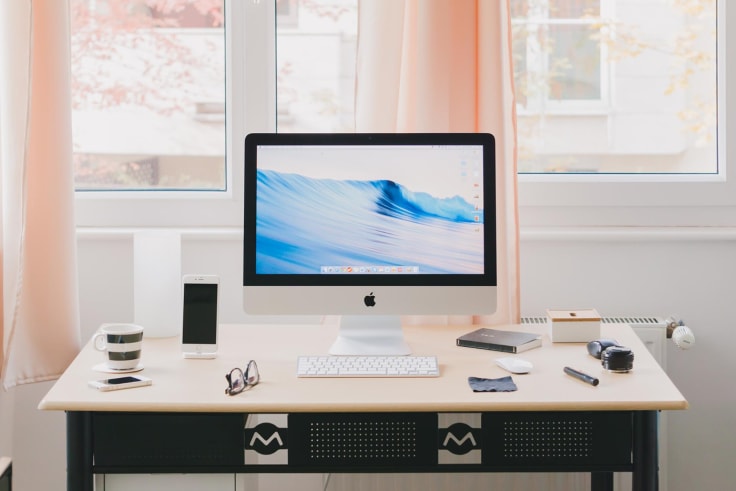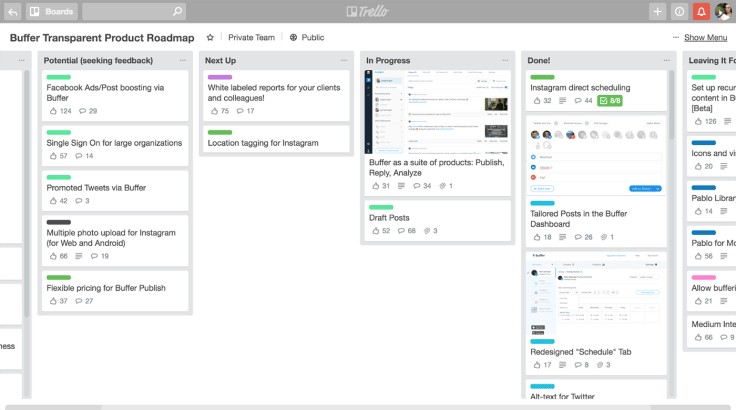Showing top 0 results 0 results found
Showing top 0 results 0 results found

Working from home is indisputably great!
It offers flexibility - saving you time and money as you're not commuting. Remote working also lets you operate whenever you're most productive, so you can actually do more in shorter chunks of time. There are many advantages to it, but you can fully enjoy them all only if you intelligently set up your home office.
In fact, when you start own business, it usually begins at home as a side project. That's ground zero. Most entrepreneurs have been there. And even if you don't care much for your home office setup and healthful working conditions in the beginning, it'll come back to bite you eventually.
A poor office set up can cause literal pains in the neck, back pain, vision problems or productivity losses and sometimes progressive frustration. These are the obstacles to overcome on your career path.
Take care right away. Otherwise, these problems are going to arise sooner or later. And better equip yourself with a practical, healthy and comfy home office today. After all, it's easier to prevent than cure.
Here we will dive into the details of setting up a smart home office space that promotes efficiency in a non-traditional work environment.
There's No Office Like Home
When designing your first home office, you should put yourself at the center of your attention and understand your own needs. After all, the office you create should serve you, not the other way around.

Therefore, before claiming your corner in one of your rooms, consider the nature of your business and the workflow it requires. Then try to identify what type of location is necessary for this type of business activity.
Are you going to meet with clients at your home office? Or do you just hang out with your laptop without seeing other people during your workday?
Those are two essential questions to sort out before you establish a home office in your bedroom and start inviting your customers to come over. That would be awkward, I guess ;-)
After setting up an appropriate location for your home office next comes the time to arrange it with the proper furniture. Of course, office furniture should amplify the entire style of your home decor, but that's a secondary issue in this case.
Let's focus on the functionality of your home office first.
Invest in a great desk
First of all, if you're about to work long hours on your laptop, make sure you have a functional desk that allows you to work comfortably in a seated or standing position, or in both positions.

After all, who said you should be sitting all the time!
Of course, it takes a while before you finally get used to the working in the standing position, but it indeed does have its appeal.
Those of you who are more demanding and are thinking of designing a smart & healthy workspace should definitely invest in a moving desk. They are great for boosting your overall health and productivity. Even if you move it up and stand for just two extra hours daily, your energy level rises by 10-20%.
That's a healthy gadget worth every dime for your productivity and health.
And btw, what's the right position for your computer?
The top of your laptop screen should be at eye level or a little below. As you scan down the screen, your eyelids will naturally close a bit and moisten, which reduces eye fatigue. Also, position your keyboard, so your forearms are parallel to the floor.
Fastcompany
Invest in a great chair
The same importance can be placed on the chair.

As a matter of fact, prolonged sitting has become a taboo these days. New research findings prove that sitting is the new smoking. It's the cause of mushy abs, colon cancer, and heart disease.
Therefore, you should minimize the time you sit and switch positions during your day, so you sit for a while, then move a little and stand a little more than before. Above all, invest in a chair that promotes a healthy position for your spine and neck.
Even though such a purchase might get pricey, it's a long-term investment. Buying solid equipment when setting up your home office comes with caring for your general productivity and well-being, so think about it.
You'll thank yourself later for making a smart decision.
Embrace the daylight and natural air
Be mindful of the quality of your light and air.

Even if you truly love your job, you can't keep your brain starving for oxygen and daylight. Both are must-have elements of any healthy home office.
So do yourself this favor and never lock yourself in the basement or any other type of windowless, dark cell in search of peace. If you can't find a place that is separate from the daily household commotion at your home - then go outside and find a coworking space that suits you instead.
Your home office should have plenty of natural light to cut down on eye strain and headaches.
Add Greenery
Make sure you not only equip your home office with furniture but also fill your space with greens or potted plants. They are literally going to bring life into your working space. It's scientifically proven that plants make people happier. In addition, they clear up the air and let your eyes rest when you look at them. Also, plants boost creative thinking and introduce natural beauty into your workspace.

Reduce Distractions
Be minimalistic and maintain order in your home office.
For instance, run a power strip behind your desk and plug everything into that. Hide your printer in the closet. Keep only what's essential for work close at hand and keep all your office supplies–pens, scissors, stapler, stamps, in your desk.
Make sure your environment is harmonious and not cluttered.
If possible, keep your business files on a separate computer so that they aren't mixed with your private files. Or if you can't have two computers, have at least two separate accounts on your computer - one for private stuff and another one for business related things.
Also, turn off all social media accounts during your work, unless your profession is social media related, then just make sure you don't hang around and chat with friends. Keep these two zones - business and private - separate for your peace of mind.
Establish work-life balance
The most significant advantage of working from home is the flexibility of setting up your own workflow. While this can be a huge advantage, it also can become a huge problem.
In fact, if you don't establish a healthy work-life balance upfront, you'll probably overwork yourself, as self-employment calls for devotion.
As a result, your fatigue could kill your motivation in the long run. And then it's the short road to burnout. Prevent this and define a balance right away that works for you. Set a schedule for your business time, but also plan relaxation for yourself.
Those two moods, once determined, will help you get the most of each. This will keep you fresh, intent and productive when necessary and calm when needed.
Of course, you don't need to keep a traditional work timeframe. It heavily depends on your profession, so if you manage clients on a daily basis, then it's best to preserve standard office hours. But, if you're doing a creative and independent work then → you can work even at night or in the early morning if it suits you.
Use the Pomodoro technique
An excellent idea for those who are their time doctors is incorporating the Pomodoro technique into their workflow.
What is it all about?
In a nutshell, this time management method was developed by Francesco Cirillo in the late 1980s. It divides your work into short, 25-minute intervals, called pomodoros (the plural in English of the Italian word pomodoro (tomato), after the tomato-shaped kitchen timer that Cirillo used as a university student.)
The secret sauce is simple here:
- Schedule your daily to-dos so you know what tasks should be accomplished each day.
- Then set your Pomodoro timer for 25 minutes. Spend those minutes on a task without interrupting yourself.
- Work on a task until your Pomodoro timer rings. Meanwhile, if new ideas cross your mind, just note them on a piece of paper and try not to get distracted. Keep yourself away from social media, your mobile phone or small talk.
- When the Pomodoro timer rings, take a break. Breathe, meditate, grab a cup of coffee, go for a walk or do something else relaxing (i.e., not work-related).
- Start a new pomodoro.
- After four pomodoros take a longer break. It's time for lunch :) you deserved it.
The pomodoro technique will change your life. It will let you efficiently manage your attention and become better at time optimization every day.
It's a great lesson to boost your productivity over time, teach you to save more time and spend it smarter in a more quality way. It will also show you how much time you need for specific tasks so that you can estimate them.
Use Trello
Okay, so you already know how to manage your time and attention. But, do you know how to schedule and track your workflow efficiently?
That's what Trello was created for. I must admit that I love this tool and I use it every day even for sorting my private stuff.
This is, for instance, Buffer's Transparent Product Roadmap in Trello:

It tells you what's being worked on, where something is in a process and of course what has been done. That's especially useful because if you work on a remote team or execute projects for a customer. You can create a board in Trello, with mutual access so that everyone involved can keep their eyes on what's in the pipeline for the next period.
Conclusion
As mentioned in the introduction, working from home can be a great experience and opportunity for those who have the right freelancing mindset. Those who are truly determined and organized to deliver on fixed objectives will appreciate the freedom of managing their time individually.
However, it's essential to approach it wisely from day one, so you neither overwork nor neglect your to-dos and private time. For all those reasons, incorporate my tips while setting up your home office space as well as your workflow.
How do you like this article? What else is essential in setting up your home office?
Let me know in the comments below.
Happy freelancing guys!



